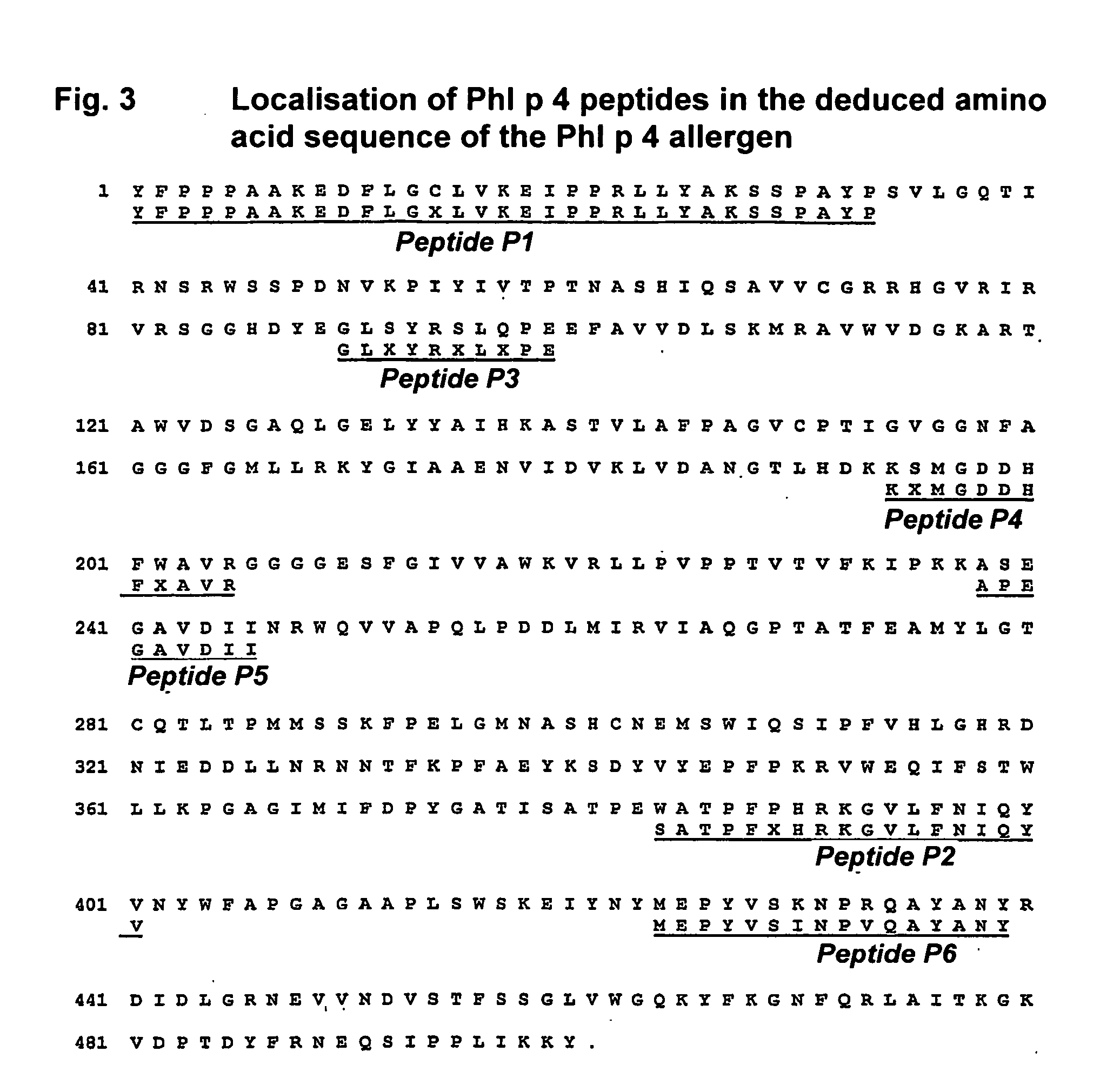Dna sequence and recombinant production of the grass pollen allergen phl p4
a technology of dna sequence and recombinant production, which is applied in the direction of peptide/protein ingredients, dna/rna fragmentation, plant/algae/fungi/lichens ingredients, etc., can solve the problem of failure to determine the n-terminal amino acid sequen
- Summary
- Abstract
- Description
- Claims
- Application Information
AI Technical Summary
Problems solved by technology
Method used
Image
Examples
Embodiment Construction
[0022] The present invention now provides for the first time the genetic sequence of the major grass pollen allergen Phl p 4, with three dominant sequences (SEQ ID NO 1, 3 and 5) arising from the single nucleotide polymorphisms (SNPs) found.
[0023] The present invention therefore relates to a DNA molecule corresponding to a nucleotide sequence selected from a group consisting of SEQ ID NO 1, SEQ ID NO 3 and SEQ ID NO 5 or a DNA molecule corresponding to a nucleotide sequence which encodes for the major allergen Phl p 4 from Phleum pratense.
[0024] The invention also covers fragments, new combinations of partial sequences and point mutants having a hypoallergenic action.
[0025] The invention therefore furthermore relates to corresponding partial sequences, a combination of partial sequences or exchange, elimination or addition mutants which encode for an immunomodulatory, T-cell-reactive fragment of a group 4 allergen of the Poaceae.
[0026] In addition to the group 4 allergens of the...
PUM
| Property | Measurement | Unit |
|---|---|---|
| Fraction | aaaaa | aaaaa |
| Percent by mass | aaaaa | aaaaa |
| Percent by mass | aaaaa | aaaaa |
Abstract
Description
Claims
Application Information
 Login to View More
Login to View More - R&D
- Intellectual Property
- Life Sciences
- Materials
- Tech Scout
- Unparalleled Data Quality
- Higher Quality Content
- 60% Fewer Hallucinations
Browse by: Latest US Patents, China's latest patents, Technical Efficacy Thesaurus, Application Domain, Technology Topic, Popular Technical Reports.
© 2025 PatSnap. All rights reserved.Legal|Privacy policy|Modern Slavery Act Transparency Statement|Sitemap|About US| Contact US: help@patsnap.com



